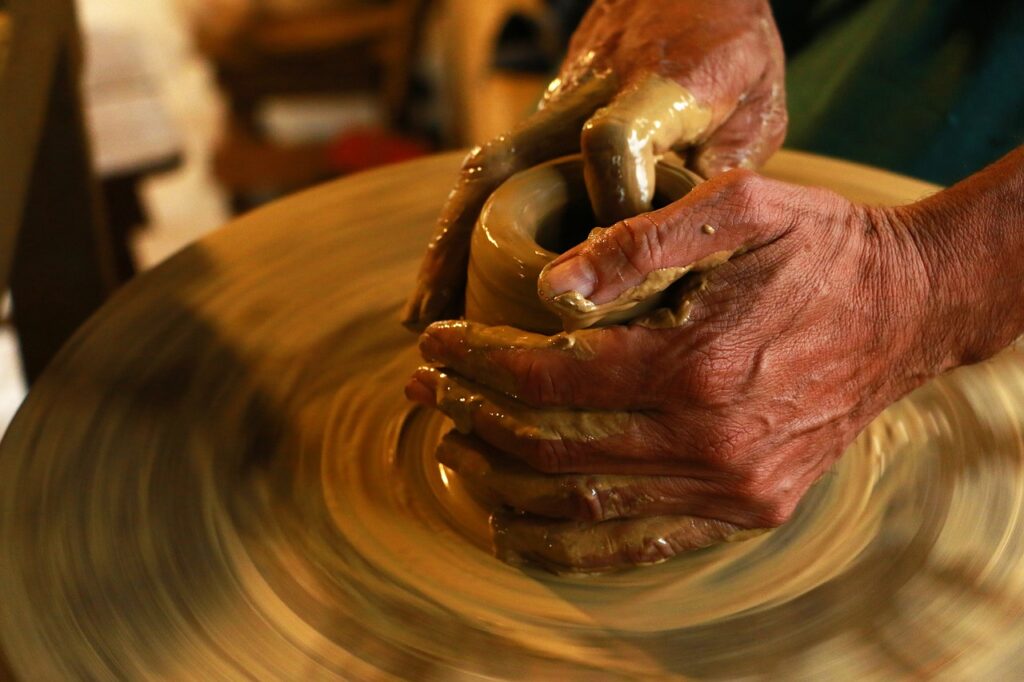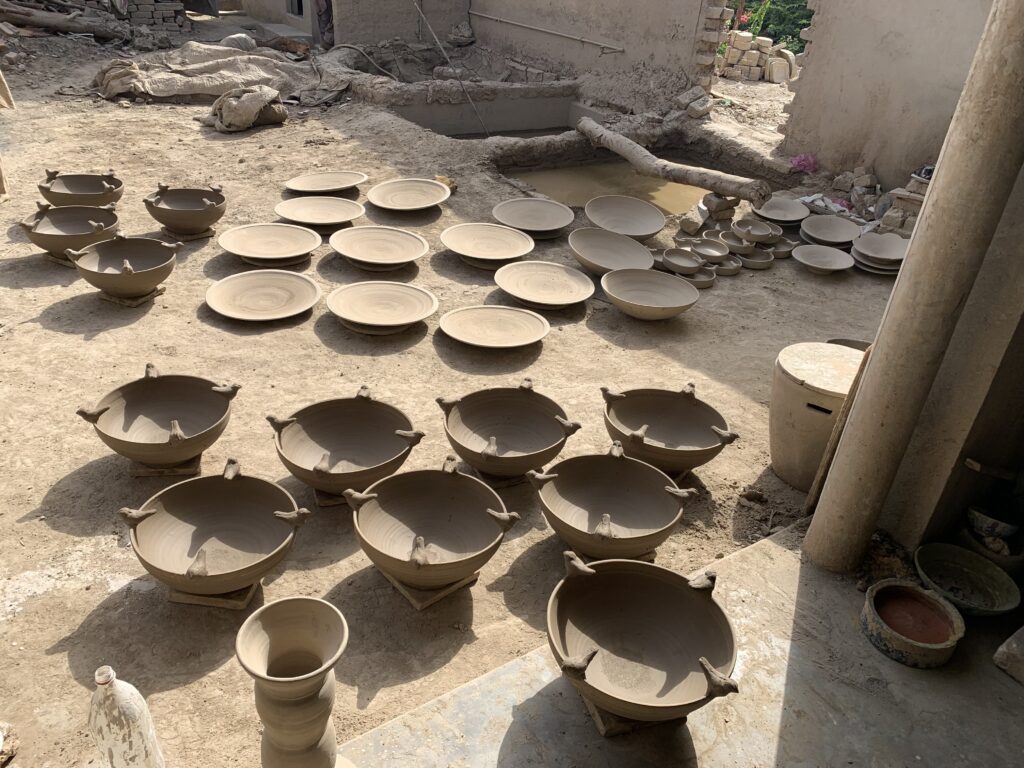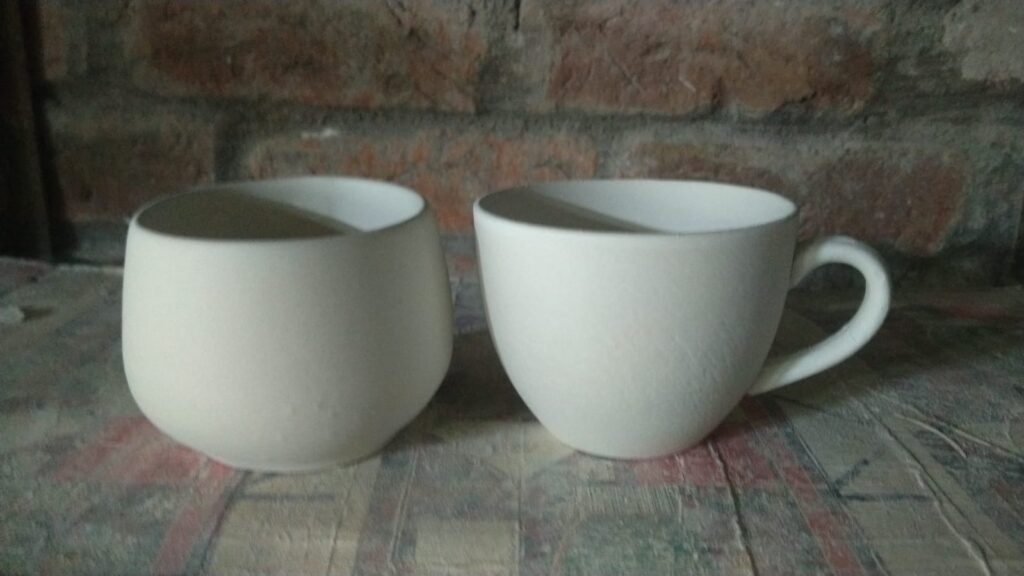Behind the Scenes
The Making of a Jug, Vase, Tray, Dish & More.
The first step involves designing the patterns and motifs. Traditional Kashikari patterns are geometric, floral, or calligraphic, often inspired by Islamic art.
The kashi karigar (artist) throws the main body of the item on the wheel, before placing it outside to dry in the sun.
Preparation of Clay
Clay Selection: High-quality clay is selected for making the tiles. This clay is typically soft and malleable to ensure easy molding.
Kneading and Rolling: The clay is kneaded to remove air bubbles and then rolled into flat slabs of the desired thickness.
Molding: The clay is cut into the required tile shapes, whether square, hexagonal, or other custom forms, depending on the design.

Initial Firing (Bisque Firing)
Drying: The tiles are left to dry naturally to avoid cracking or warping. This can take several days.
Bisque Firing: After drying, the tiles are fired in a kiln at a relatively low temperature (about 800-900°C). This process hardens the tiles but leaves them porous, ready to absorb the glaze.

Glazing and Painting
Glaze Application: A base glaze is applied to the tiles, typically in white or other light colors to serve as the background. The glaze gives the tiles their signature shine and smooth texture.
Hand-Painting: Artisans meticulously hand-paint the design using mineral-based pigments. Traditional Kashikari uses vibrant colors like cobalt blue, turquoise, green, and yellow.
Detailed Work: This step requires extreme precision, especially for intricate floral or geometric patterns.

Final Firing (Glaze Firing)
After painting, the tiles are fired again in the kiln at a higher temperature (around 1000-1200°C). This process vitrifies the glaze, making the surface durable and glossy.
Color Enhancement: The firing process also enhances the vibrancy of the colors, fusing the paint into the glaze.

Assembly
Tile Placement: Once the tiles are fired and cooled, they are assembled to form the final mosaic or pattern. Each tile is placed according to the original design.
Installation: The finished tiles are installed on walls, floors, or other surfaces using a special mortar or adhesive. In architecture, Kashikari is often used to adorn mosques, palaces, and other grand structures.
Polishing and Finishing: After installation, the tiles may be polished for an even smoother finish. Any adjustments to fit the tiles precisely into place are made at this stage.

